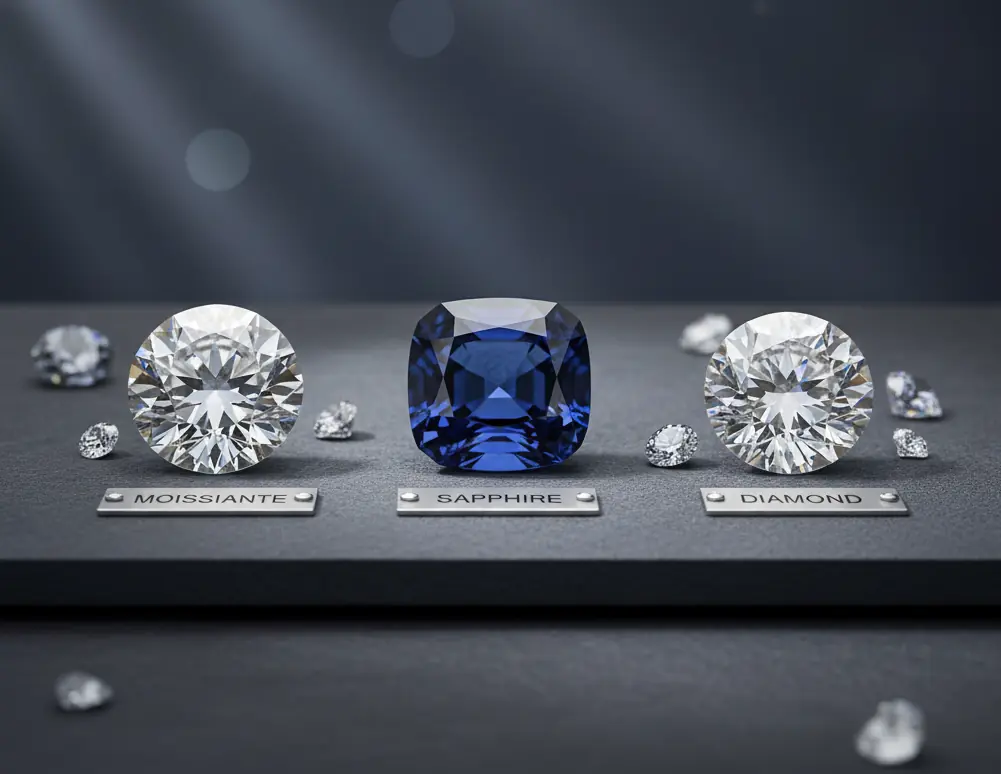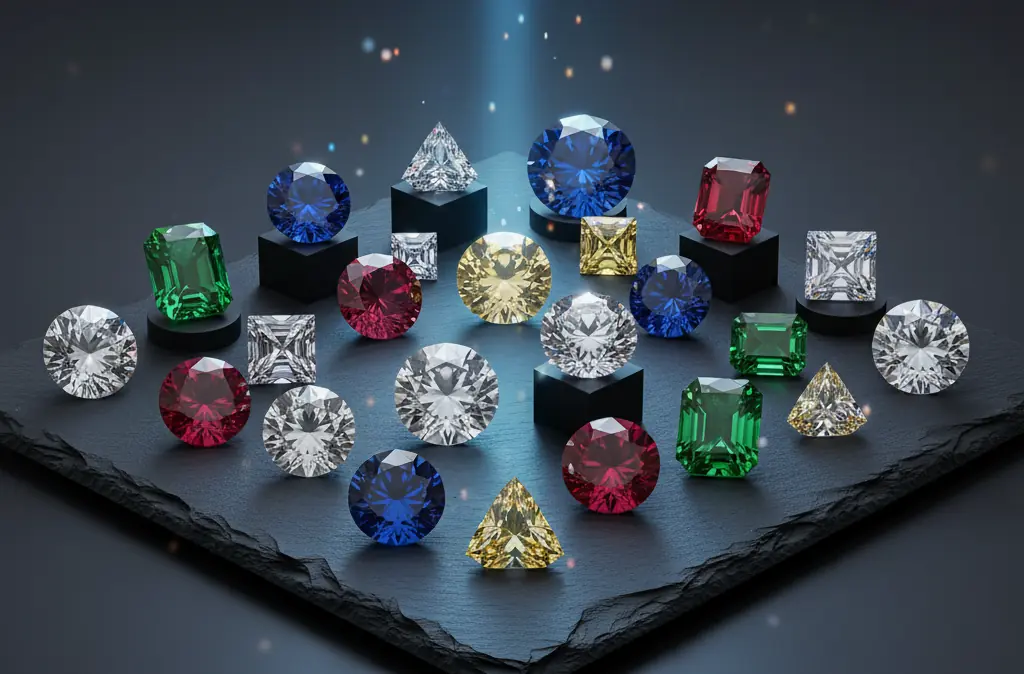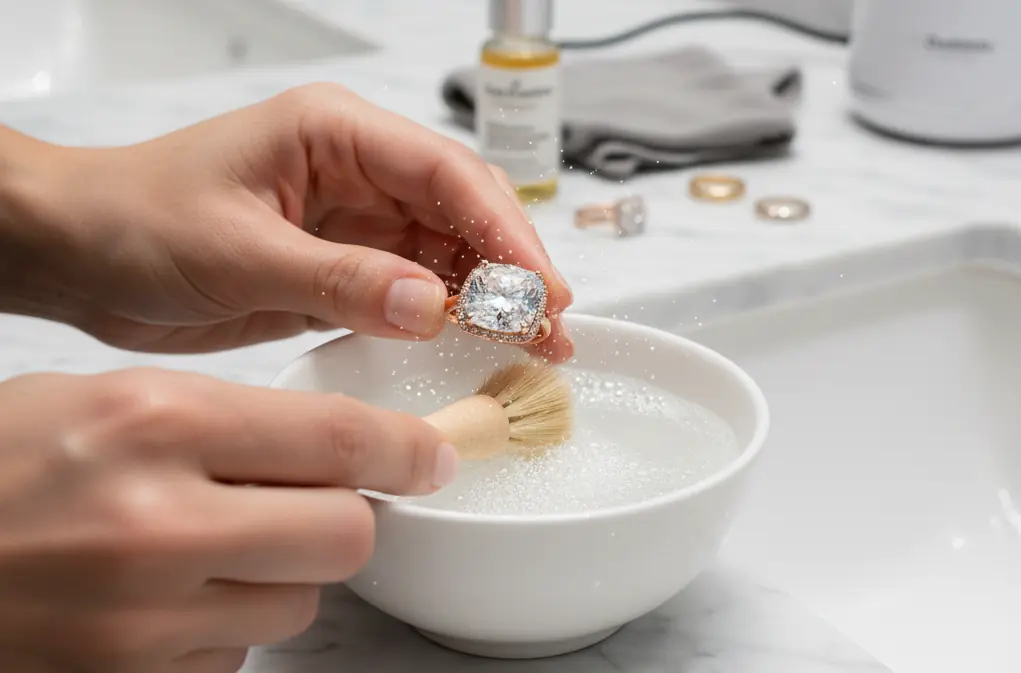The Glittering Landscape: Ethical Gemstones Under the Microscope
In the world of fine jewelry, the choice of gemstone is paramount. Beyond mere aesthetics, consumers are increasingly mindful of the ethical implications behind their purchases. This deepens the appeal of alternatives to traditional mined diamonds, with moissanite and sapphires emerging as compelling contenders. This article delves into a comparative analysis of moissanite, sapphire, and diamond, examining their origins, properties, ethical considerations, and value.
Diamond: The Traditional Benchmark
For centuries, the diamond has reigned supreme in the jewelry industry, symbolizing enduring love and commitment. However, its allure is often shadowed by significant ethical and environmental concerns.
Origins and Rarity
Diamonds are naturally occurring minerals composed of pure carbon, formed deep within the Earth's mantle under immense pressure and heat over billions of years. Their geological scarcity and the complex extraction process contribute to their high cost.
Ethical Concerns
The diamond trade has historically been associated with issues such as 'blood diamonds' or 'conflict diamonds' – stones mined in war zones and sold to finance insurgencies. While the Kimberley Process aims to prevent this, transparency and traceability remain challenges. Mining operations can also have substantial environmental impacts, including habitat destruction, water pollution, and significant carbon emissions.
Properties
Diamonds are renowned for their exceptional hardness (10 on the Mohs scale), making them incredibly durable and resistant to scratching. They possess a high refractive index and dispersion, giving them unparalleled brilliance and fire. Their value is determined by the '4 Cs': Carat, Cut, Color, and Clarity.
Sapphire: The Royal Gemstone
Sapphires, the vibrant birthstones of September, have a rich history dating back to ancient times. Often associated with royalty, wisdom, and divine favor, they offer a captivating alternative to diamonds.
Origins and Variety
Sapphires are a variety of the mineral corundum, with the most well-known being blue, though they occur in a spectrum of colors, including pink, yellow, green, and orange (with the exception of red, which is classified as ruby). They are mined from various locations worldwide, including Sri Lanka, Madagascar, Myanmar, and Australia.
Ethical Considerations
While sapphire mining can also have environmental impacts, it is generally considered to have a less fraught history regarding ethical sourcing compared to diamonds. Responsible mining practices are becoming more prevalent, and smaller-scale artisanal mining operations often offer greater transparency. However, as with any mined gemstone, due diligence is essential.
Properties
Sapphires are highly durable, ranking 9 on the Mohs scale, making them suitable for everyday wear. They exhibit excellent brilliance and a captivating color that can range from deep velvety blue to lighter hues. While not as fiery as diamonds, their intense color saturation is a primary draw.
Moissanite: The Brilliant Alternative
Moissanite has rapidly gained popularity as a stunning and ethical gemstone, often chosen for its brilliance and affordability. It is a naturally occurring mineral, but the moissanite used in jewelry is almost exclusively lab-created.
Origins and Creation
Naturally occurring moissanite (silicon carbide) is extremely rare and found in meteorites. The moissanite used in jewelry is synthesized in laboratories, a process that allows for controlled production and impeccable quality. This lab-created origin is key to its ethical appeal.
Ethical and Environmental Benefits
Because moissanite is lab-created, it bypasses the environmental degradation and ethical concerns associated with traditional mining. There are no issues of conflict sourcing, land disruption, or hazardous waste. This makes it an environmentally conscious and conflict-free choice.
Properties
Moissanite possesses remarkable optical properties. It ranks 9.25 on the Mohs scale, making it very hard and durable, second only to diamond. It exhibits a higher refractive index and even greater dispersion (fire) than diamond, resulting in a more dazzling sparkle with rainbow flashes. It is often colorless or near-colorless, and its clarity is typically flawless due to its controlled creation.
Comparative Analysis: Moissanite vs. Sapphire vs. Diamond
Durability
- Diamond: 10 (Mohs scale) - The hardest natural gemstone.
- Moissanite: 9.25 (Mohs scale) - Extremely durable, suitable for daily wear.
- Sapphire: 9 (Mohs scale) - Very durable, excellent for everyday jewelry.
Brilliance and Fire
- Diamond: Exceptional brilliance and fire, classic sparkle.
- Moissanite: Superior brilliance and fire, often more pronounced rainbow flashes than diamond.
- Sapphire: Excellent brilliance, but fire is less pronounced than diamond or moissanite; color saturation is its key visual appeal.
Ethical Sourcing
- Diamond: Can be ethically complex due to potential for conflict diamonds and environmental impact of mining.
- Moissanite: Lab-created, therefore conflict-free and environmentally friendly.
- Sapphire: Generally considered more ethical than traditional diamonds, but responsible sourcing practices are still important.
Cost
- Diamond: Highest cost, varies significantly based on the 4 Cs.
- Moissanite: Significantly more affordable than diamond for comparable size and quality.
- Sapphire: Price varies widely based on color, size, and quality; generally more affordable than diamonds of equivalent size.
Appearance
- Diamond: Clear, brilliant white with balanced sparkle.
- Moissanite: Intense sparkle with noticeable rainbow fire, often appears brighter than diamond.
- Sapphire: Known for its rich, saturated colors, particularly blue.
Making the Ethical Choice for Your Jewelry
Choosing between moissanite, sapphire, and diamond involves weighing personal preferences, budget, and ethical considerations. For those prioritizing a conflict-free, environmentally conscious, and incredibly brilliant gemstone that offers exceptional value, moissanite stands out. Its lab-created origin ensures ethical integrity without compromising on beauty or durability.
Sapphires offer a timeless elegance with their rich colors and good durability, making them a wonderful choice for those seeking something distinctive and historically significant, provided ethical sourcing is confirmed. Diamonds, while the traditional choice, require careful consideration of their origin and impact, and may be an option for those who prioritize this specific stone and can ensure its ethical provenance.
Ultimately, the most ethical gemstone is one that aligns with your values and brings you joy, knowing it was sourced responsibly and sustainably.



